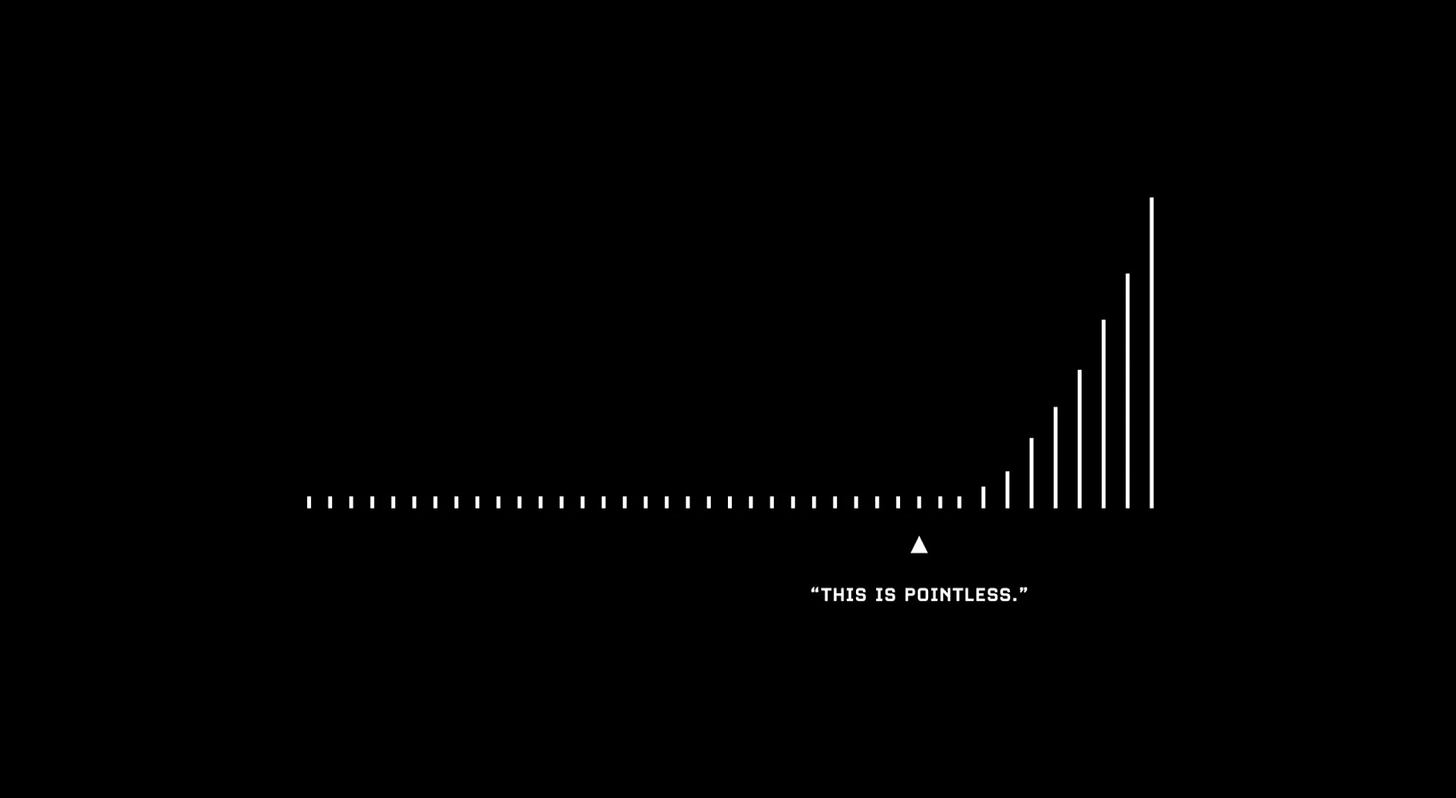I love the optimism of the og “This is pointless” visual:
It gives hope to those trying hard now but not yet seeing results. I know it does, because it did so for me. Sometimes hard work does pay off, if you give it enough time and effort in the right direction.
But I also feel compelled to share the other side of the story that’s more common but often left untold:
Truth is—as they say—90% of startups fail. More indie hackers drop out than succeed. We just don’t hear about them, because they disappear quietly into the night. Those who talk about their failure are often in retrospect, after they’ve had some success, or are still grinding (and use failure stories to build in public or to share their journey). Nobody likes to talk about it when they had truly given up. We never hear of them, but they are there, in the graveyard of failed products nobody visits. And even on a whole of journey perspective, even if you keep iterating and pivoting, you might still fail due to conditions outside of your control (like market, economy, accidents).
I recognise I need the optimism of the first visual to keep going as an entrepreneur, but I also recognise I need to be real about my odds of success, and the risks I’m taking. I shouldn’t get too lost in the daydreams of the future to not see the reality of the market or my product, nor should I hold myself back too much because of reality.
Holding these 2 narratives in balance helps me keep me on my toes.



I do see the two possible outcomes, but what does distinguish them at the point of "this is pointless"? What metrics are available to help us understanding which of our toys has the highest chance of success. I know I'm sometimes overly enthusiastic about my ideas, while in reality they are pretty niche. What worked while in a company is presenting your idea and directly ask for money to continue. They either give it as they believe in your idea or they hesitate.
But how does this translate into you own one-man-business? Any ideas on that?